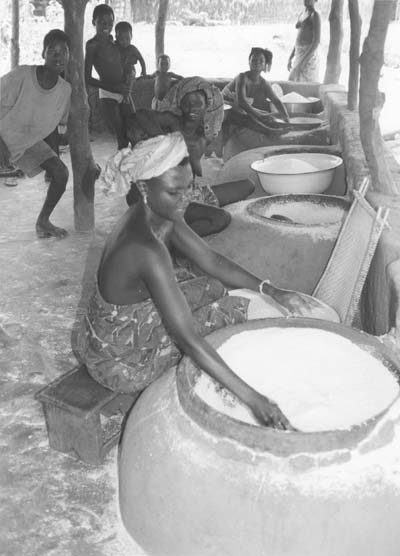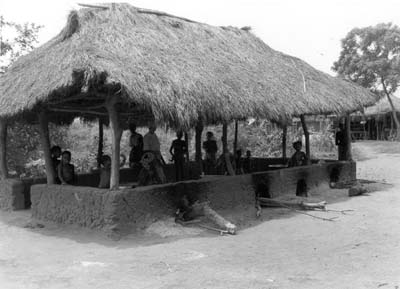Most of humankind’s earliest tools -jars for storing grain or wine, grinding stones for making flour from cereals, threshing tools, winnowers and shellers - were designed to assist in processing and storing food. The nineteenth century saw great progress in the development of machines for processing and storage, which led to better hygiene and nutrition. In the twentieth century, vast improvements in materials and production skills and increased knowledge of crops should have meant there was little that could not be achieved in the effort to plant, harvest, process and store all the crops necessary for healthy, varied diets for most of the world’s population. Unfortunately, the reality of the situation is very different: many people in the world live well below an acceptable level of nutrition, and many more face starvation.
This booklet presents an approach to improving the efficiency and productivity of crop processing at village level in developing countries. Village processing can lead to improved food security, greater prosperity and enhanced quality of life for the villagers. It requires improved tools and machines on a scale larger than that required for the immediate family.
Similar undertakings in the past were often too large or too optimistic. That is why this booklet highlights some of the requirements and dangers of developing a village enterprise and includes steps to secure funding and create simple business plans that offer a good chance of early repayment of loans. Village processing should not make abrupt changes to lifestyles or cultures; it should gradually eliminate some of the more inefficient practices and so improve the overall standard of living for all those affected by change. This may be sufficient to generate household incomes that will enable children to go to school and provide local people with more food. Simple machines can make it possible to grow a wider range of crops, including those that would be difficult to process manually.
These proposed village operations are best suited for products that need to be processed in large volume. They often need cooperation or input by several farmers or perhaps an entire village. Individual family operations, on the other hand, are often limited to traditional techniques that rely on manual operation. Finished food products for retail are often successfully produced using traditional techniques.
FIGURE 1 Gari production at a village in Benin.

To be able to help, communities, planners and policy-makers need to know the potential for any crops that may be grown in identified areas. In the long term, infrastructures may need to be developed to take advantage of world market demand for suitable crops. Account has to be taken of prevailing socio-economic factors and local customs and culture. An adequate support system will reduce the risk of failure for a farmer who must often rely on guidance from a local shopkeeper who is only looking for a quick sale. By identifying the criteria for successful village processing, it becomes possible to extend those good practices and their benefits to villages anywhere in the world.
FIGURE 2 A simple covered building for gari production in Benin, adequate for keeping the rain off.

Processing at village level, even in developing countries, has been practised for many years and certainly for the past 150 years, as settlers from industrialized societies took their skills, tools and machines with them as they moved into agrarian societies. Local manufacturing has developed in countries of Africa, Asia and Latin America only in the last 50 years. Little progress had been made in those countries to utilize wind, water or steam power, despite widespread use in industrial countries. In modern times, with the introduction of the diesel engine and the electric motor, a wide range of processing machines can be found in most countries, but for various reasons they still are not available to a vast number of people who could benefit enormously. Many people are trapped in poverty because they lack the knowledge, opportunity, capital or outlets to process and sell their produce.
Community members must decide together whether they want to take on the added responsibilities necessary to develop into a more prosperous, secure society. A village’s primary resource is its crops; adding value to the crops makes it possible to generate funds. This first step could lead to changes in centuries-old techniques and traditions, setting up systems for better food production, income generation and vastly improved quality of life. Villagers must take a hard look ahead. They must decide how they want their communities to develop and look at the possibilities for producing viable goods that will help them to achieve their aims.